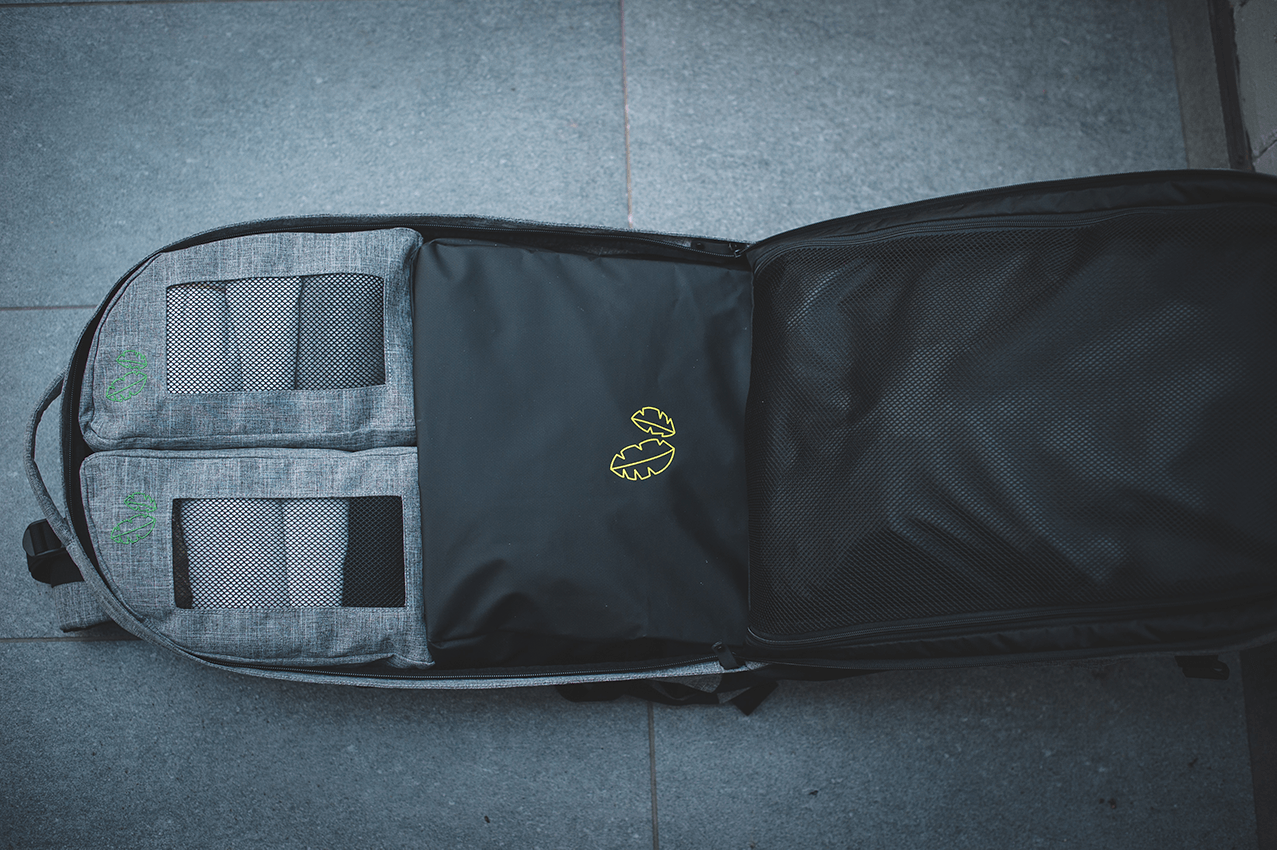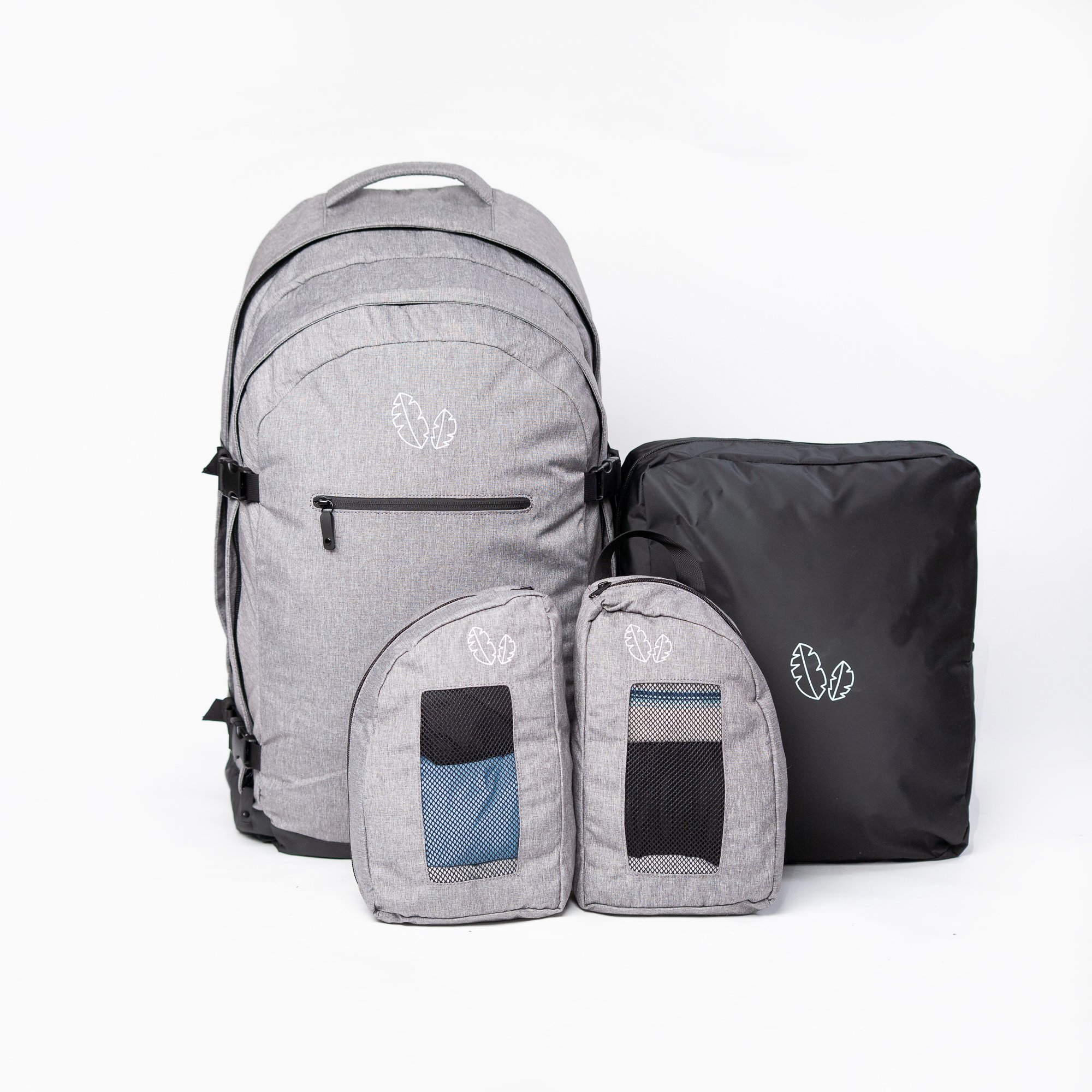A front loading backpack makes travel infinitely easier! Packing becomes a breeze and you avoid the dreaded situation of having to unpack your entire backpack to retrieve something you forgot at the bottom. If you’ve ever been forced to dump your entire bag on a street corner or at a bus/train station you know the anxiety this brings. Couldn’t there be an easier way to travel with a backpack?
This is what motivated us to design our own 60 liter front loading backpack, the Khmer Explorer Travel Set. It was a long and onerous process to build it from the ground up, but when you travel with the Explorer, I think you’ll agree it was worth the effort!
Here is the full story of how we built the best 60 liter front loading backpack for travel.
P.S. If you decide our travel gear is right for you, use the code BANANATRAIL at checkout to SAVE 20%. A small thanks for reading our blog! 🙂
My first 10 years of travelling were spent living out of a 35L front loading backpack the size of a couple of milk jugs. I used to laugh when I saw massive hiking bags cumbersomely loaded into tuk-tuks and squished into taxis. I’d think to myself, “what do they possibly have in there?”. Then one day that all changed.
My experience with a hiking backpack in Peru
Peru was a 3-week flashpacking escape from the corporate cubicle doldrums of my life at the time. The trip would include 2 multi-day (guided) hiking excursions through the Andes (Inca Trail and Santa Cruz Trek) as well as your standard dose of sightseeing, adrenaline seeking, and getting reacquainted with my inner flaneur at cafes and restaurants. All these activities would occur through various climate zones and temperatures, necessitating more equipment (sleeping bag, hiking clothes, and hiking boots) than my beloved 35L front loading backpack was capable of carrying. Without thinking twice I gravitated to a 60L Arc’teryx bag, believing it to be a wise choice for travel. The Ferrari of the backpack garage.
Nope.
Ok. This bag, like others of its breed, is amazing for multi-day self-sustained hikes where ergonomics and weight are paramount, but it simply doesn’t work properly for long-term travel. Anyone who has ever tried to find something in a top loading backpack knows how ill suited this type of bag is for a life of moving hostel to hostel and through crowded marketplaces.
It took traveling to Peru to make me realize this common travel plight. Tragically, I almost forgot about this struggle after returning home from my adventure. Almost.
The moment I decided to build a travel backpack
During an early morning bus ride to go skiing in Whistler, I was woken up with the nagging thought of the awful travel backpack once again. At that moment I made a commitment to myself to see what else was available on the market. That night, I began combing through the internet for a better 60L travel backpack. I found plenty of carry-on sized backpacks and a few full sized front loading backpacks. Unfortunately, none were exactly what I was looking for. The carry-on sized bags looked great, but lacked the size required for those longer trips through multiple climate zones. Plus, I had my concerns that even if I crammed everything in, I’d be overweight and forced to check the pack regardless. The larger backpacks, by outdoor bag manufacturers like Deuter and Osprey functioned properly, but were styled in the fashion of the hiking bags I was trying to get away from.
Feeling it was my responsibility to build a travel backpack that looked great and functioned better, I set out on a mission with really no idea of where to start…
Now that I had committed to taking the ring to Mordor without knowing the way, I figured attempting to sketch would be a good place to start. As you can see from the photo below, the whole drawing thing didn’t go so well…. (at least it was a front loading pack).
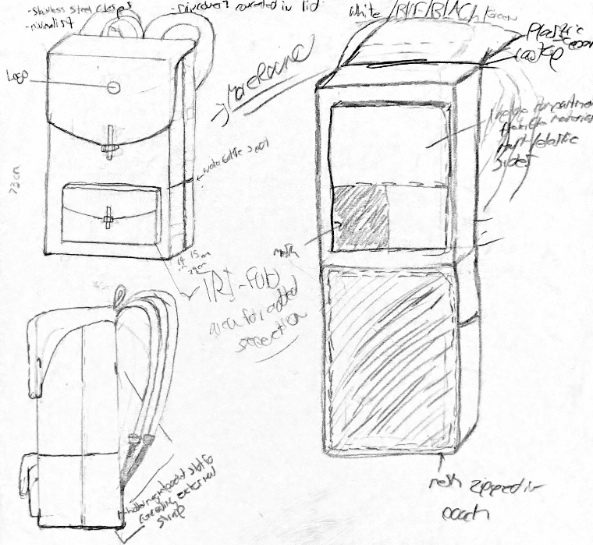
Realizing this sketching wasn’t going anywhere, I moved on to computer design and finally had a vague idea of what my kind of front loading backpack might look like. The bag would have lay flat capability (to pack like a suitcase), be built of durable, but fashion forward materials (and colours), and have sufficient room for all of the gear needed for those epic, once in a lifetime journeys.
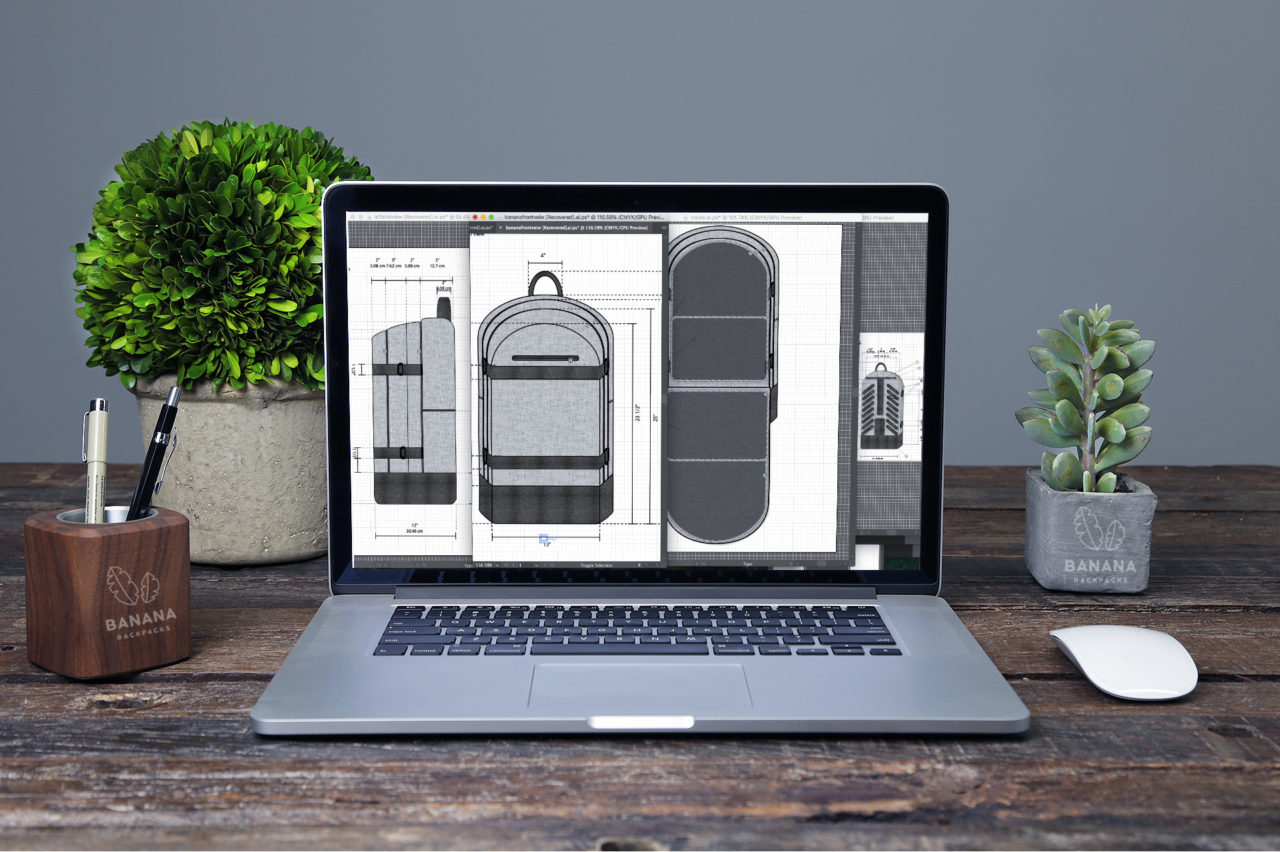
The design above shows one of the first conceptualizations of this idea. I superimposed it on this very organized work station so you don’t have to see my own messy desk!
Great! I had successfully made a virtual travel pack. I could envision myself opening the bag, effortlessly arranging all my travel articles, and watching the envious stares of fellow travellers. The virtual bliss was surreal. Now I had to create a prototype.
Enter the front loading backpack prototyping phase
My limited sewing experience (excluding Grade 7 home economics) and lack of a sewing machine (not that I’d know where to start) forced me to get creative. I ventured down to a local sewing supply store and picked up the following key ingredients for my backpack prototype stew:
(1). Plain Black Fabric;
(2). Sewing Pins;
(3). Safety Pins; and
(4). Cardboard (sourced from cut-up cardboard boxes).
From here I broke our design down panel by panel, (somewhat) meticulously wrapping the fabric around a cardboard frame and securing it with the pins. After poking myself countless times (pins are not the smartest fastening idea), I eventually had something that resembled a travel backpack (albeit not the most comfortable or practical travel companion).
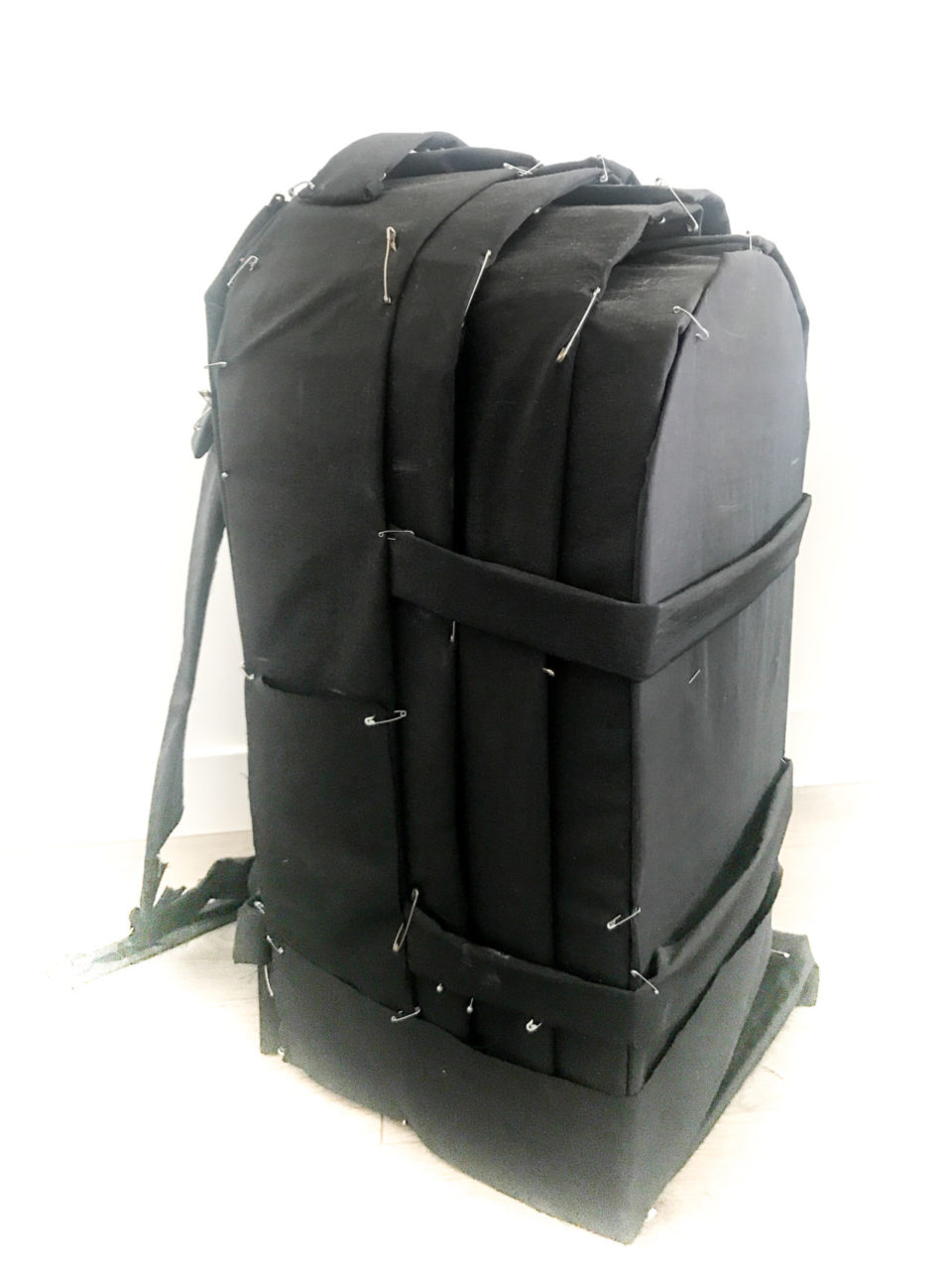
A tip for any of you aspiring backpack builders out there: staples provide an excellent and safe alternative to pins should you wish to embark on your own prototype construction at home.
Ok, so I had a working backpack prototype. Correction: a prototype. What next?
Sure, I wanted a travel backpack that would help me travel more efficiently and improve life on the road. But I also wanted travel gear that meant something more. Just like impossible to pack, top loading backpacks that didn’t resonate with me, companies working solely for the motive of profit also failed to resonate. In my opinion, the greatest companies are measured by what they do to leave the world a better place. I’d been inspired by companies like Toms Shoes and Patagonia and felt if I were to build a business selling travel backpacks made of pins and cardboard, at the very least I could make it a socially responsible pin bag company that made the world better.
Finding a backpack business partner and building a mission driven business
Growing up 3 years apart, my sister, Anika and I were privileged enough to travel the world together with our globe-trotting parents since we were diaper-clad tots (yes that’s us below). Naturally, when she finished her Master’s in Human Rights it was only logical that my chronically risk averse sibling would jump on the opportunity to partner with me on the presently unnamed big travel backpack project…
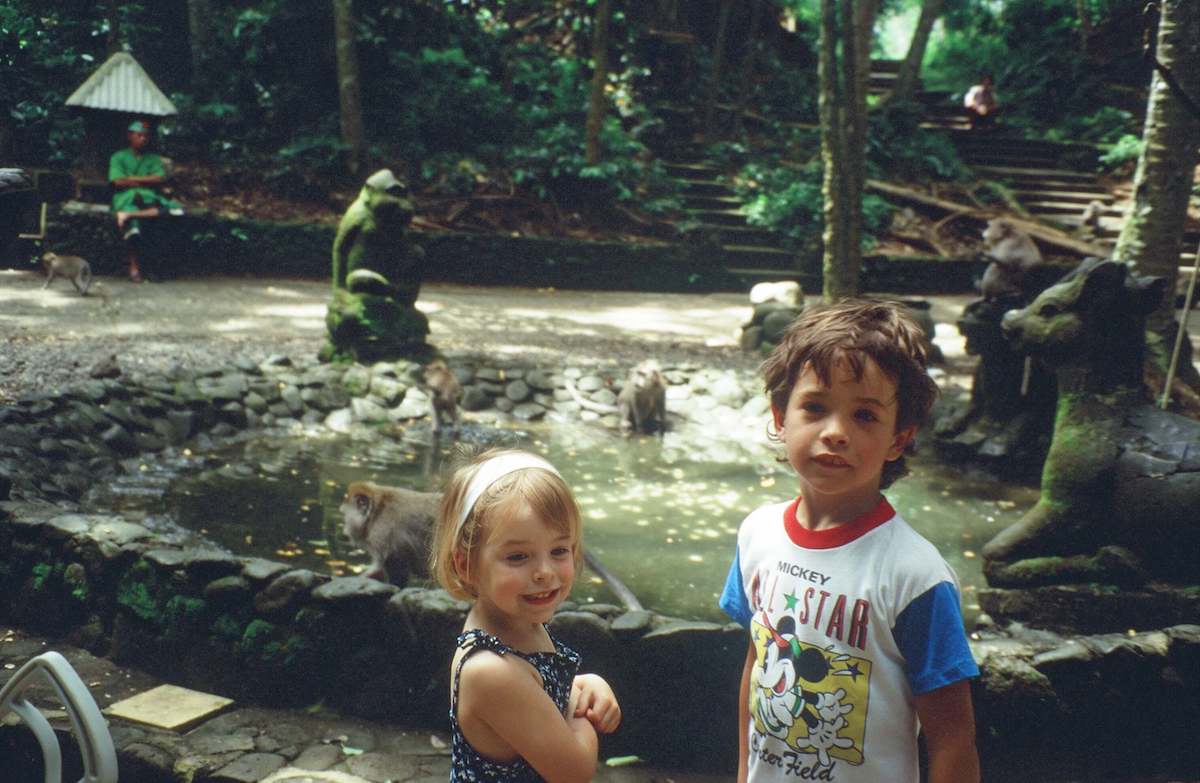
Surprisingly, convincing her was not as difficult as I foresaw. When Anika and I discussed our desire to do something that made a difference in the world she instantly gravitated towards the idea of supporting basic human rights (like education and clean water) and encouraging awareness of social and environmental issues impacting countries throughout the world.
Tragically, we live in a world where the number of issues appears to be countless. With so many issues, where would we start?
We both answered that question with one resounding answer: Cambodia.
Cambodia had a profound impact on Anika. After travelling through the country and learning about the 1970s genocide that occurred there, Anika was overwhelmed by the power of travel to change your perspective and provide you with insight into the world that you would’ve never known otherwise. This fateful trip had such an impact on her that she went on to later volunteer in the country, working with a local organization dedicated to providing ethical and sustainable employment opportunities for local artisans. Ultimately, she wrote her Master’s thesis on the impact of fair trade on economic and social rights advancement in Cambodia. While my experiences were not as profound as Anika’s, the kindness and generosity I experienced while backpacking through the country, left me feeling that this was unquestionably the right place to start.
So we had an idea of helping to support basic human rights, and a country we wanted to start in. We had to get more granular. We wanted to do something truly special that would have a long term impact. We wanted to provide a hand up to people in need, not a hand out.
So we chose education. Anika and I have both been very blessed to have witnessed the value of education both through experience (such as travel) and formal education through primary and post-secondary schooling. We felt that we wanted our backpacks to positively impact education in Cambodia. We loved what Tom Shoes and Warby Parker had done with one-for-one models, but we wanted the impact to be more tangible. Sure it’s amazing to know your purchase has helped, but wouldn’t it be even better if the product incorporated your amazing contribution into its design to somehow make each product unique?
After a lot of brainstorming, we conceptualized the idea of helping a child go to school for a year with every backpack we sold. Every bag would bear the name of the child whose schooling was supported. We would embroider this name somewhere onto the backpack. Making each bag effectively unique.
Logically we felt like the left strap of the backpack would be a good spot, conveniently located right above the heart.
So after all of this brainstorming where were we?
We had an amazing idea to help support education in Cambodia and a bag made of cardboard and pins. Pretty much launch ready I think?! Queue up the investors.
I could envision our pitch to Shark Tank…“Hey Mr. Wonderful, I’ve created a 60L front loading backpack prototype made of pins and we’re gonna give at least 10% of our revenue away to help support human rights. Are you in?!”
Not quite. We had an idea of what we wanted to create and the impact we wanted to make. Now we needed two partners. A manufacturer capable of making our 60L travel backpack and a non-governmental organization (NGO) working on the ground to improve education in Cambodia.
The search for partners
Searching for a manufacturing partner
We set out to find a manufacturing partner with expertise, ethics, and enthusiasm (to work with a couple of fresh arrivals to the travel gear scene). To do so, we spent hours combing through import records to determine who reputable companies were using to manufacture their goods and then searched (often fruitlessly) for the contact information of manufacturers we were interested in speaking with. Many days of head scratching and frustration led to the conclusion that Vietnam was a mecca for backpack manufacturing. Believing that the best way to be taken seriously was to go in person, I booked a ticket to Ho Chi Minh City, Vietnam with a few names, numbers, and a big dream.
Searching for an NGO partner
To impact education in Cambodia, we required a partner organization working on the ground in Cambodia that we could team up with. A non-governmental organization (NGO) that believed in our cause as much, if not more than we did, and had the expertise and knowledge required to make the biggest impact possible. Like manufacturing, we had stringent criteria. We were looking for a partner with transparency, local employment and knowledge, holistic programs, and proven impact. A number of amazing people connected us to experts in the field, who directed us to the most impactful organizations. We perused their annual reports and eventually conducted Skype interviews with several organizations to get all of the required details. Interviewing allowed us to narrow the field down to two organizations that I would meet with in person, adding a trip to Siem Reap, Cambodia to my Vietnam adventure.
Deciding on a manufacturing partner
Before my trip to Ho Chi Minh City (HCMC), I’d sent out a series of emails to the bag manufacturers we’d managed to locate. This effort resulted in one confirmed meeting and a lot of silence. I was able to arrange several more meetings by calling on manufacturers directly after arriving in Vietnam and I toured many factories during my first week in the country. Many were eager to meet/work with us and and others insinuated we should ”take a hike” unless we could place a first order in excess of $100, 000. After a whirlwind week of introductions, we found the perfect manufacturer to bring our project to life. We were incredibly fortunate to find a partner that was not only excited about our backpack design and the concept of the business, but was also Worldwide Responsible Accredited Production (WRAP) certified, and had established many long tenured relationships with major reputable brands. I eagerly handed over my designs (excluding the pin bag photos) to their research and development team and began the anxious process of waiting for our first real prototype of our 60L travel backpack.
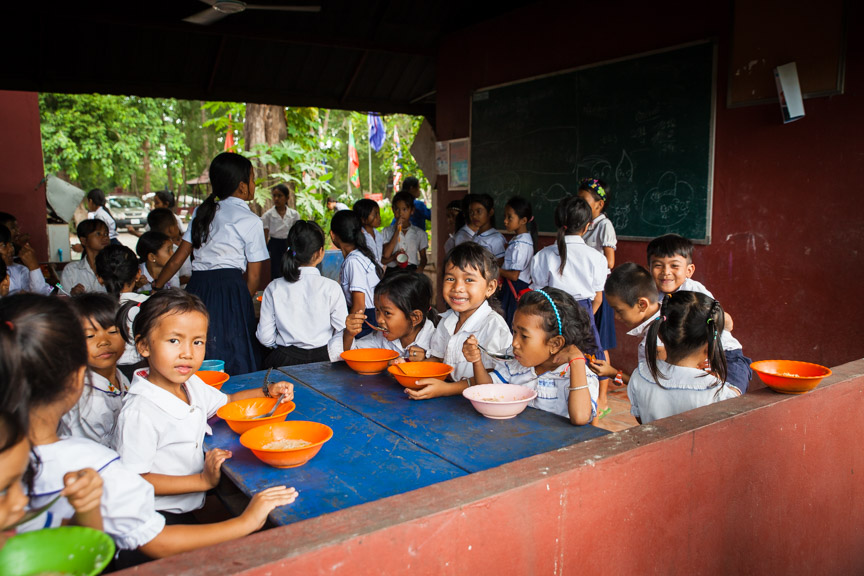
Deciding on an NGO partner
This wait provided the perfect time window to journey to Cambodia and meet with the two 5 star organizations Anika had pre-vetted.
The experience was overwhelming as the magnitude of the challenges that so many Cambodian children face to get an education was reaffirmed. A few of these challenges include:
(1). A lack of clean drinking water at schools;
(2). Economic pressure to drop out of school to work and help generate income for their families;
(3). Walks as long as 20 km to school;
(4). A lack of simple school supplies like books and pencils; and
(5). A lack of food.
Despite these challenges, the two incredible organizations we interviewed were doing amazing work to change the fortune of Cambodia’s children and youth. After another difficult decision process, Anika and I decided to partner with Caring for Cambodia and support their Food for Thought program. This amazing program provides a student with two meals per day at school for a year.
Why is this a big deal?
In the areas surrounding the schools, most people survive on less than $1 USD/day and many families cannot afford to feed every one of their children. This program encourages families to send their children to school by relieving them of one of their key financial costs. This leads to higher attendance and lower dropout rates, which are some of the most significant education issues in Cambodia. This program was the perfect fit for our backpacks and would allow each backpack to help change the life of a child. That impact would be incorporated into the design of the backpack itself: something we would do by embroidering the Khmer name of each child supported onto the left strap of each bag.
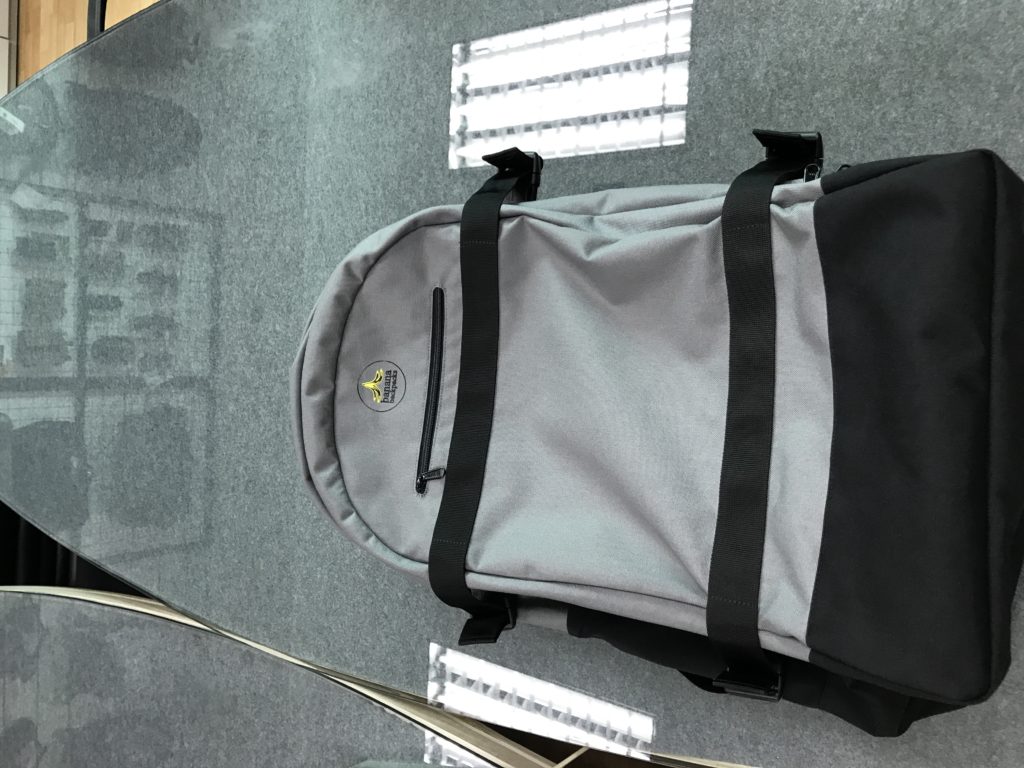
The first "real" prototype and beyond
After visiting Siem Reap, Cambodia and finalizing our partnership with Caring for Cambodia, I returned to HCMC for the big reveal. Our first real front loading backpack prototype was ready at last. The first prototype was a massive work in progress a as you can see from the photos below, but it was a foundation upon which we’d build.
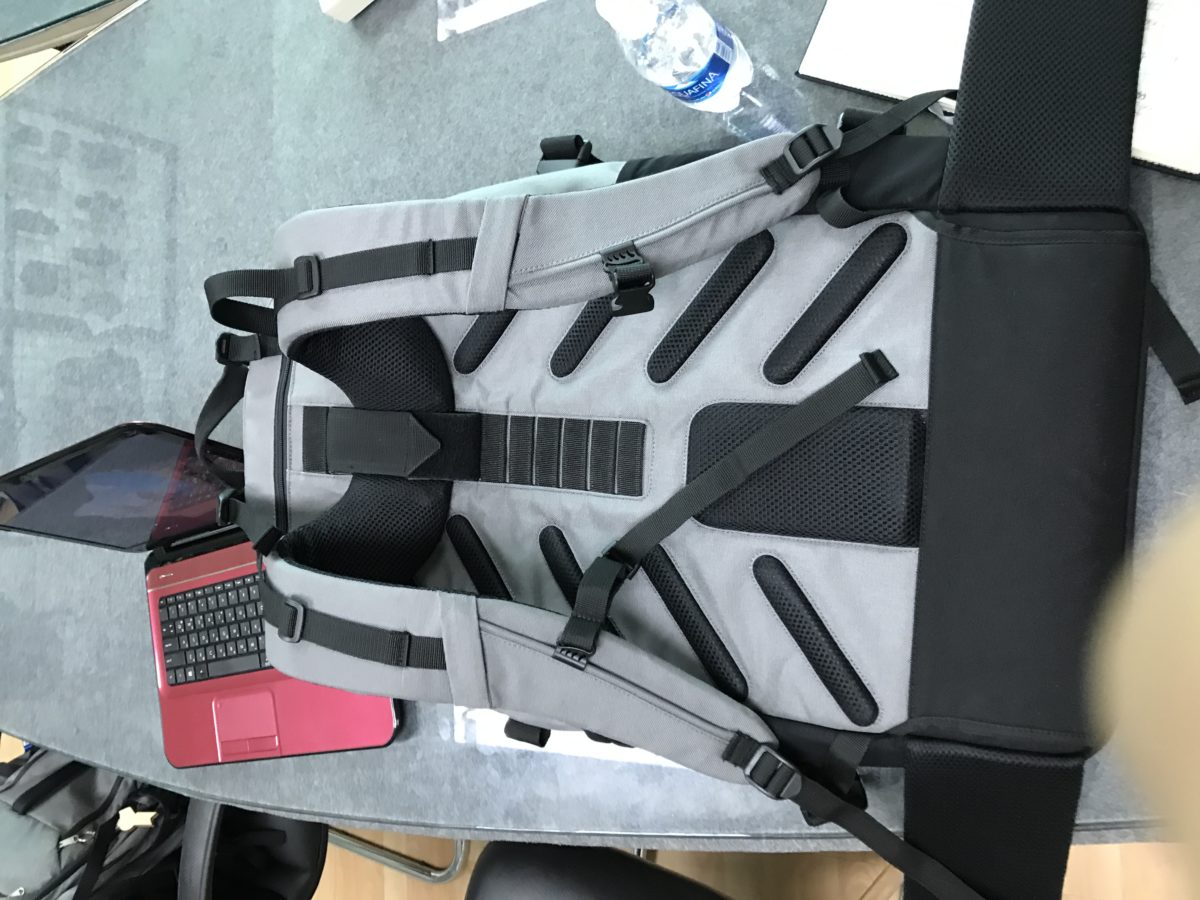
From prototype to the ultimate 60L travel backpack
This foundation and the feedback of numerous travellers, friends, family, and complete strangers would lead us to create three more prototypes over the span of five months to get to the 60L Khmer Explorer Travel Set that you see today. Patience pays off and despite numerous delays and setbacks we couldn’t be more proud of our first travel backpack, the Khmer Explorer Travel Set.

